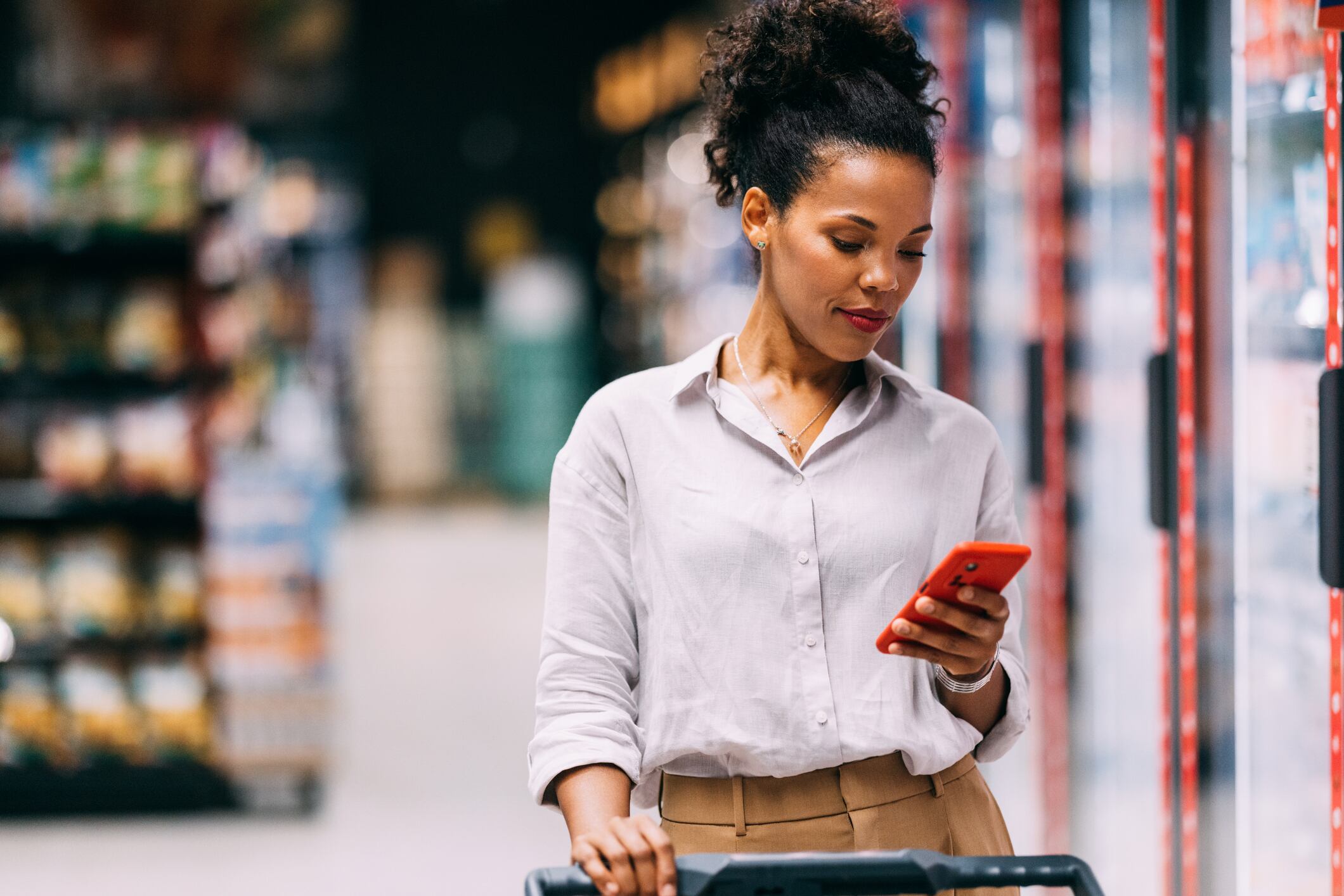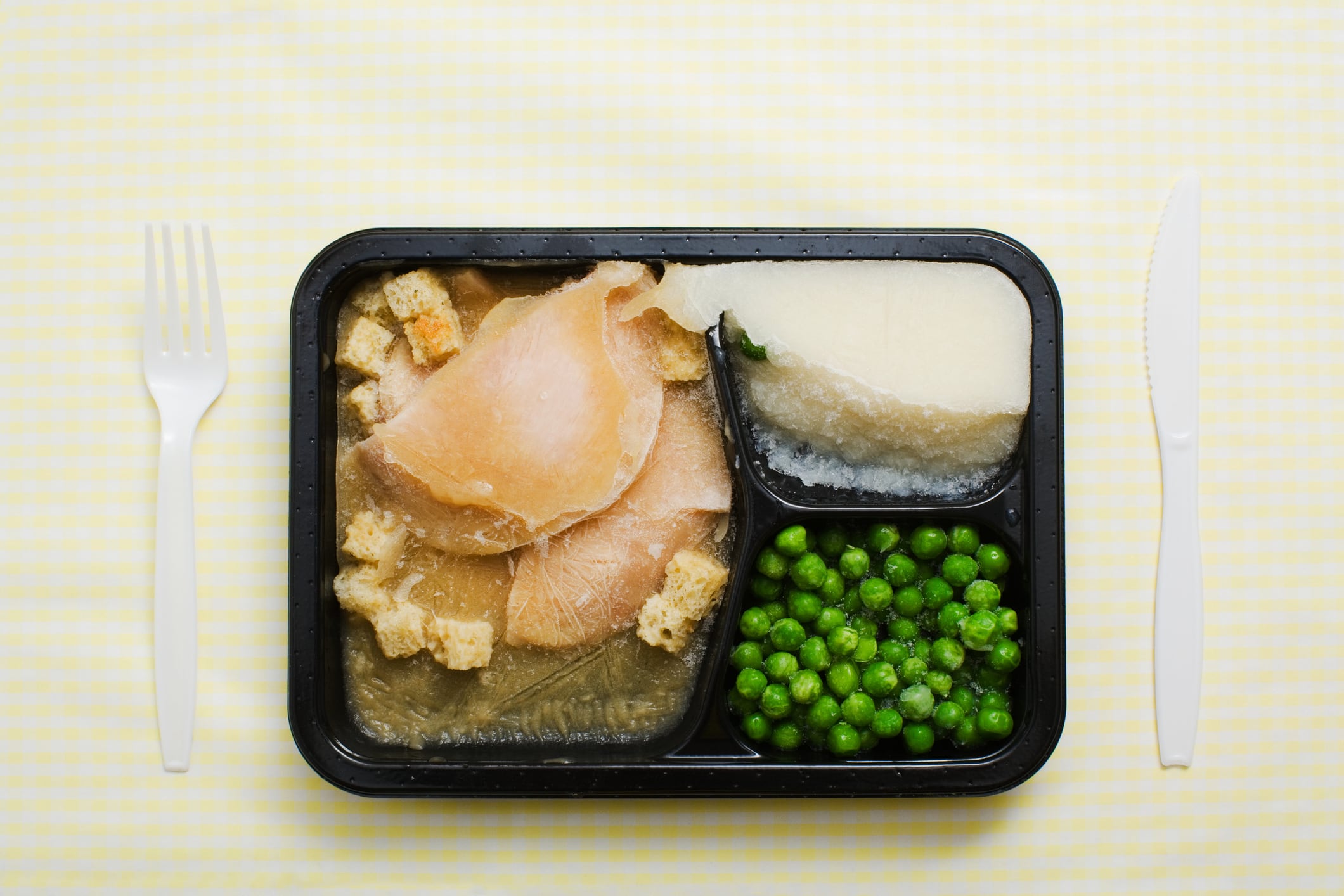Making the distinction between ‘healthy’ and ‘unhealthy’ UPF means meticulously eyeing back-of-pack ingredients lists and nutritional tables. But very few have the time or inclination to do this.
Instead, more and more consumers are turning to an algorithm that combines level of processing with nutritional content. By scanning a package barcode on their phone, consumers can see the product ranked on a zero-to-10 scale between ‘unhealthy’ and ‘healthy‘.
GoCoCo, the start-up behind the algorithm, aims to immediately dispel uncertainty around UPF.
Can ultra-processed food be healthy?
Consumers fear ultra-processed food (UPF), and why wouldn’t they? Consumption has repeatedly been linked to poor health outcomes, and even to death by the World Health Organization.
But what fails to make as many headlines is that not all UPF is ‘unhealthy‘. Packaged bread and breakfast cereals are both UPFs, but research suggests they are not as harmful as other UPFs.
So how can processed food and drink products be scored as ‘healthy’ or ‘unhealthy‘? GoCoCo‘s algorithm, developed in Spain, applies three filters to get there.
Inside the algorithm: GoCoCo differentiates between 'healthy' and 'unhealthy' UPF
GoCoCo uses its own scoring methodology, but is informed by well-known models and systems.
Step 1: The World Health Organization (WHO) Nutrient Profile Model
The WHO Nutrient Profile Model classifies food into 18 categories. The WHO sets specific nutrient limits for each category, including total and added sugars, total and saturated fats, calories, sodium, and the addition of sweeteners
Step 2: The Nova Food Classification System
There is no single, universally accepted definition of ultra-processed food, but the most widely-used is Nova. The system splits level of processing into four groups: from raw and minimally processed foods; to processed culinary ingredients; processed food; and ultra-processed food.
Step 3: All products receive a score based on a combination of the WHO Nutrient Profile Model and Nova systems. One point is then deducted from that score if the product would receive a 'warning' according to the Warning System used in countries like Chile and Argentina. For example, if a food product contains more than 400mg of sodium per 100mg in those countries, it carries a 'high in sodium' warning label.
The final score sits between 1-10, colour coded from dark red for 1, to orange, yellow, light green, and dark green for 10.
Unlike other barcode scanning apps such as Yuka, GoCoCo does not rate additives. The focus is on the “bigger picture”, explains co-founder Bertrand Amaraggi.
Who wants to avoid ‘unhealthy’ UPF?
GoCoCo is targeting people living with type 2 diabetes, since obesity and overweight are precursors to the disease. Excessive consumption of ‘unhealthy’ UPF has been linked to these risk factors.
But according to Amaraggi, focusing solely on nutritional values is not enough. Based on purely anecdotal evidence, the co-founder suspects artificial sweeteners could have a negative impact on insulin resistance - in which case swapping out a sugar sweetened beverage for an artificially sweetened one, would not be the answer.
The app not only detects ‘unhealthy’ UPF, but directs shoppers to ‘healthier’ alternatives within the same category. GoCoCo has also developed an ‘ultra-processed food tracker‘, whereby consumers use the app to take a photo of their plate, and receive advice on how to make it ‘healthier’ - perhaps with more whole foods, or fruit and vegetables.
GoCoCo is gaining momentum, and it’s likely the app is becoming increasingly popular among those not living with type 2 diabetes. In Spain alone, the app has garnered more than 800,000 users since it first launched in 2019. GoCoCo is also edging into France and is gaining momentum in the US, tallying around one million users globally.
Growth is not dependent on brand awareness alone, but also on access to databases of products. “With huge databases of products, we can access ingredients and nutritional tables and categories, then we run our algorithm to score them,” Amaraggi explains.
Consumers’ awareness around ultra-processing is also important. The UK and US are ahead of the curve when it comes to UPF awareness, whereas Spain, France, and other countries where wholefood, Mediterranean diets still reign, may be less familiar with the term.
Why can’t Nutri-Score help consumers find the ‘healthier’ product?
In Europe, Nutri-Score is the most widespread voluntary front-of-pack nutrition label. Using an algorithm developed in France back in 2017, which has since been updated, Nutri-Score gives food and drink a category-based score between E (for the ‘least healthy‘) and A (most ‘healthy‘).
How does GoCoCo compare to Yuka?
Another barcode-scanning app, Yuka, has gained popularity in recent years. Developed in France in 2017, the app gives consumers a score based on nutritional quality, the presence of aditives, and whether or not the product is organic. Yuka has a loyal following and significant market share, but offers up very different scores to that of GoCoCo. They have different aims, after all.
GoCoCo co-founder Bertrand Amaggio offered up an example of a breakfast cereal made by a big-name manufacturer. "If you take the same breakfast cereal containing 22% sugar, Yuka will give it a 72/100 and we will give it 2/10. If users are living with diabetes, it can make a big different."
Given a ‘healthy’ and ‘less healthy’ scoring system already exists in Europe, why was there a need to develop a new one?
Amaraggi says initially GoCoCo did include Nutri-Score in its app, offering consumers the Nutri-Score rating alongside its other score. But consumers found it confusing to be presented with more than one score, and the co-founder believed Nutri-Score’s original algorithm wasn’t rigorous enough to challenge manufacturers.
GoCoCo dropped Nutri-Score within the start-up’s first year. “It was quite easy to ‘game’ for manufacturers,” he recalls. “It was easy to get a good Nutri-Score. You could remove a little bit of sugar, put in sweeteners, add a bit of fibre, and you could get a Nutri-Score ‘A’ or ‘B’.”
Food and beverage makers continue to reformulate to attain healthier Nutri-Score rankings, and GoCoCo aims to encourage this reformulation among UPF manufacturers. “Maybe in the end our biggest impact is not on our own users, but is when manufacturers improve their formulations to achieve better scores.”
GoCoCo is fiercely independent, and Amaraggi stresses that 100% of its revenues come from users rather than manufacturers. “We receive zero funding from the food industry, and they have no influence whatsoever on the scores or suggested alternatives.”



